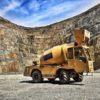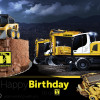Power, Dirt & Intelligence
The contractor-dealer relationship can be the tipping point between success and failure for many construction companies – especially as it relates to equipment management. The growing adoption of telematics by heavy equipment owners is making it easier for contractors and their dealers to work together to ensure optimal uptime and efficient operation of each machine.
Joey Coogler Jr., owner and operator of Coogler Construction in Columbia, S.C., is a recent believer in the power of remote monitoring. He founded Coogler Construction in 1994 with help from his father and brother Chris, who is now the vice president of the company. They started with a backhoe and a track loader and have since grown to 100 pieces of equipment spread across South Carolina.
Coogler recently added a new 2050M dozer from CASE Construction Equipment and Hills Machinery salesman Charlie Mengedoht to his fleet. He was impressed with both the size and power of the machine, but little did he know the machine would provide him other substantial benefits – like reductions in idle time and improved equipment management – down the road.
Partnering for Efficiency
A few months after Coogler Construction first received the 2050M, Mengedoht examined the machine’s operating statistics provided through the machine’s telematics system – CASE SiteWatch™ – and found something interesting about its idling time.
“We found out that his guys were letting the machine idle for a large percentage of the time – 43 percent of the machine’s life was spent at an idle,” Coogler says. “SiteWatch showed us that, so now I can relate that back to the customer and he trains his guys to shut the machine off and not let it idle.”
Mengedoht estimates an hour of engine idling time on the 2050M costs $25 (fuel and wear). At Coogler’s rate of use, he estimated a full year of idling at that pace would amount to about 400 idling hours – or a cost of $10,000.
That places a tangible cost savings on eliminating that behavior. Not only does it amount to money out of the contractor’s pocket, but also time: since the 2050M is a leased machine, the hours spent idling wasted critical time that counted against its lease and warranty.
After learning about the excessive idling problem, Joey Coogler enforced a new rule with his employees: five minute idle down and then shut the machine off, or else pay for the additional idle time.
Another benefit of SiteWatch is the dealer’s ability to track how many hours the machine has been used and when it needs to be serviced next, which means less hassle and downtime for contractors.
“There’s just endless possibilities with SiteWatch,” Mengedoht says. “It helps us and the customer stay on top of it and takes one less worry out of their pocket.”
The 2050M comes standard with CASE SiteWatch™ activated as part of CASE ProCare. ProCare is an all-in-one heavy machine support program that comes standard on CASE M Series dozers. It includes a suite of product assurances including a three-year/3,000-hour full machine factory limited warranty, three-year/3,000-hour planned maintenance and a three-year advanced SiteWatch subscription.
“When the numbers came in, and Charlie added that on top, it was like icing on the cake,” Joey Coogler says. “It made the deal even better.”
Right Match of Size and Power
When deciding if the 2050M was right for them, the Coogler brothers focused on the size of the dozer and if it had the power and agility to work on their site development projects. They found that it was easy to transport without requiring new permits, trucks or trailers, and that it provided the power and agility required of their work.
“This size machine fits a lot of the jobs in many different ways,” says Chris Coogler. “It’s not just the pushing power. It can do more; it can run up there with the bigger dozers. It fits us so well.”
The machine’s power for its size was immediately recognized. The largest dozer in the CASE lineup at 214 horsepower, the 2050M offers up to 14-percent more power, nearly 81,000 pounds of drawbar pull and a robust, box-style C-frame. It also improves fuel efficiency over previous comparable CASE models by 10.5 percent thanks to its Selective Catalytic Reduction (SCR)-only Tier 4 Interim engine solution.
“It’s the biggest CASE dozer I’ve ever been on. It’s very powerful, very strong and very smooth as you’re using that to power through gummy material and rock. It has a very manageable power,” says Joey Coogler. “If you’re cutting on the left hand side of the blade, trying to pull that material out, the machine transfers power where it’s needed, which is better than some of the other dozers I have.”
While on a jobsite, the brothers found that the 2050M dozer has the balance to handle difficult slopes they encounter and fast cycle times to get the job done in a timely fashion.
“You push a load down, and you back up and get another. It’s quick,” he says. “It allows you to move more dirt every day. The more material you can move per day, the more you’re going to build every month.”|
The Coogler brothers were also impressed by the machine’s blade control. The dozer features enhanced fingertip blade controls such as blade angle, blade sensitivity and blade shake, as well as fine grading on command – which reduces blade speed by 40-percent for increased accuracy.
“I do like the blade control. If you’re in a real hard deep cut and you want to slow the machine down, you slow the blade down. You’re running high speeds, dressing up trying to get done quick or running slopes, you’ll want to speed the blade up,” he says. “Because your machine speed is high, you can do it quickly.”
Another key component of the machine is its visibility. The redesigned cab offers floor-to-ceiling glass doors and a cab-forward design to provide maximum visibility with direct line-of-sight to the blade edge.
Visibility is important to Joey Coogler for both jobsite safety and production purposes.
“The visibility helps with productivity because, the better the operator can understand what’s going on around them, the more they’re going to get done,” he says. “If they can’t see what they’re doing with the blade, they’re going to make more passes. It’s going to take them longer to get one thing done, one pad graded, one pond graded. It takes longer. The better visibility, the quicker things get done. It’s an efficiency thing.”
The size and strength of the dozer may have initially attracted the brothers to the machine, but, in the end, they couldn’t be happier with the total package they received.
“I’m thinking this dozer will probably be around for a long time,” says Joey Coogler.













